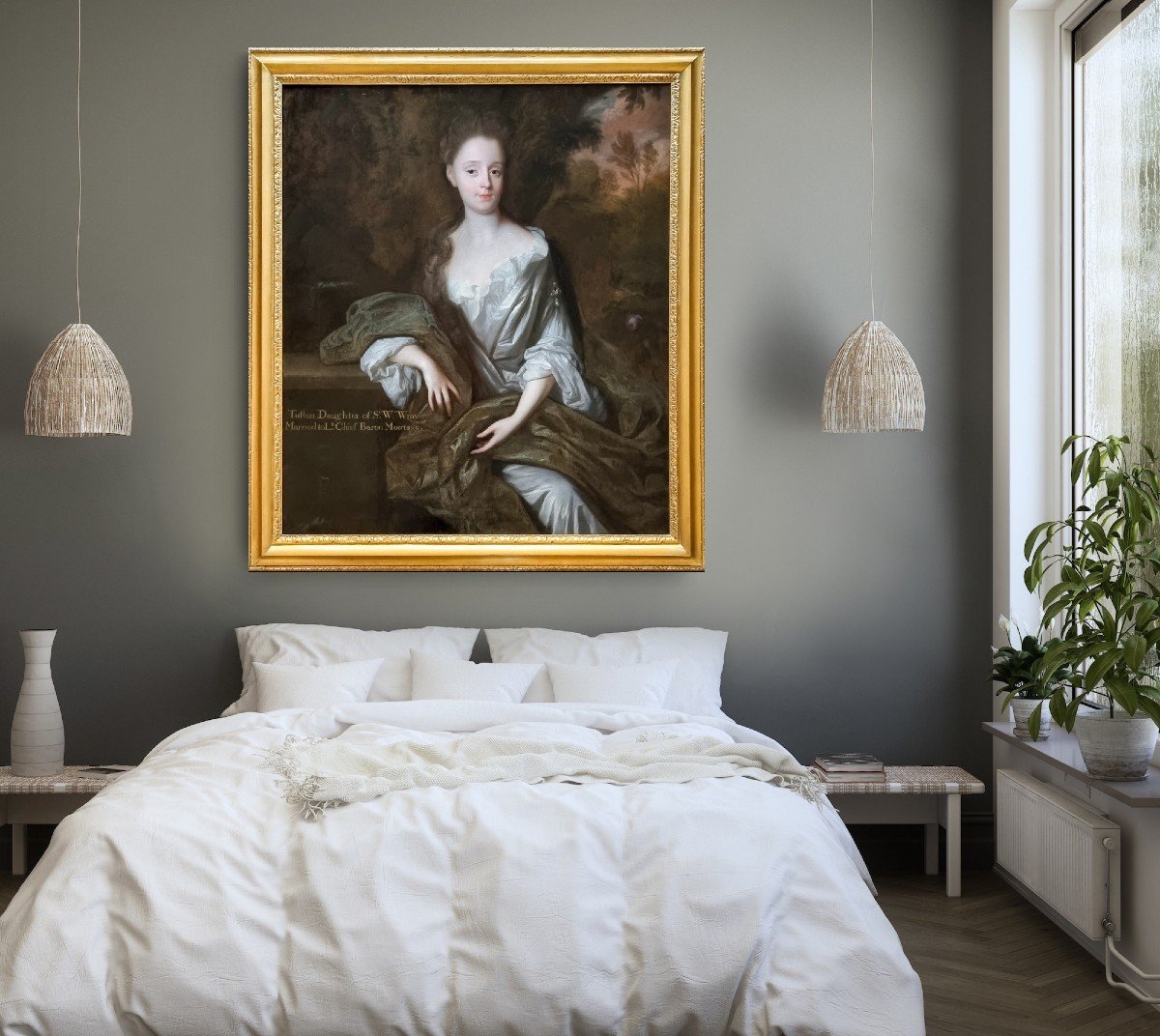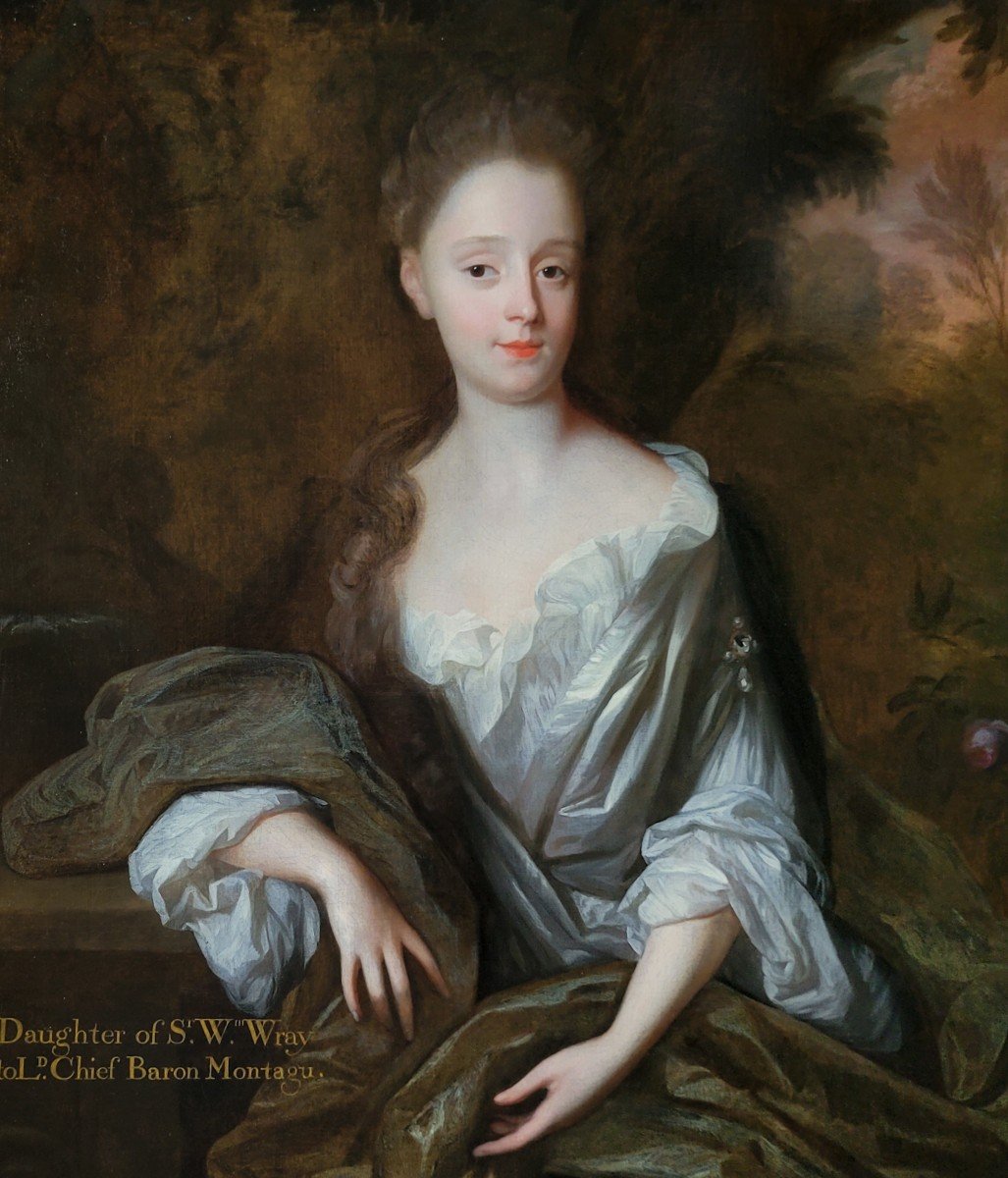"Portrait Of Lady Tufton Wray C.1685, By Herman Verelst (1641-1702), Antique Oil Painting"
This magnificent large-scale portrait depicts Tufton Wray, later Lady Montagu, seated in a wooded area, resting her arm on a plinth next to a fountain, a warm evening sky in the background. Lady Wray was a paragon of the wealthy and privileged society that she belonged to – and her status is evident in the choice of her final resting place - the great Canterbury Cathedral. The portrait was painted circa 1685, when the sitter was around eighteen years old. Much of the attractiveness of this elegant large-scale portrait resides in the graceful composition and the beauty of the youthful sitter.Lady Wray is wearing a white satin dress with a pearl clasp on the sleeve, and her body is enveloped in a voluptuous wrap. While the dress is loose, it nonetheless follows the “tight bodied” style via an invisible corset – such images exude a sense of status and Augustan decorum, and were highly influential in transmitting these values into the first half of the eighteenth century. An inscription on the portrait identifies the sitter: 'Tufton Daughter of Sr Wm. Wray/ Married to Ld Chief Baron Montagu' and on the reverse is a handwritten label: ‘Sir Godfrey Kneller 1648-1723. Portrait of Tufton Wray cir 1683. Collection: Homedown, Hambledon No. 24’.
Tufton Wray was a daughter of English politician, Sir William Wray, 1st Baronet, of Ashby (c.1625-1669) - the Wray’s were a family of judges and politicians for many generations. She had three brothers: Sir Christopher (c.1652-1679), Sir William (died c.1686), and Sir Edward (all died without issue), and four sisters. On the 6th October 1694 she married Sir James Montagu (1666-1723) in London. Sir James was an English lawyer, Whig politician, a judge, and also as Solicitor General and Attorney General under Queen Anne. The couple had one son, Charles (1695-1759), and one daughter, Elizabeth (d. 9th March 1746).
Charles was a politician and he succeeded the estates of his father in 1723. He married Ann Colladon (died 1780) in 1725, daughter of Sir Theodore Colladon of Chelsea, and sub-governess to the Princesses. The couple had a daughter and two sons, their son Frederick (1733-1800) succeeded his father’s estate, and around 1787 he built Papplewick Hall which became the family seats for much of the 18th century. Robin Hood is, of course, said to have haunted the district, and a cave, called Robin Hood’s Stable, is close to the hall. Frederick died childless and the Papplewick estate passed to his sister’s grandson Richard Fountayne-Wilson (1783-1847) together with the surname of Montagu. In 1826 he gave it by Royal Licence to his eldest son, Andrew, who was 10-year-old at the time. Andrew Montagu took charge of the 1,758-acre estate during 1840 and moved into Papplewick Hall from his home at Normanton, Rutland. He never married and on his death in 1895, the Papplewick Estate was left in trust, for his brother's youngest son, James Fountayne Montagu. James inherited the estate on his 25th birthday in December 1912, and he developed it as a horse breeding centre however the business failed and Papplewick was sold in April 1919 to Alderman Albert Ball.
Elizabeth married Sir Clement Wearg (1686–1726), an English lawyer and politician, and solicitor-general from 1724. Elizabeth and Clement were interred in the same grave, under a plain raised tomb, in Temple Church (London), with accordance of Clement’s will.
The sitter died 6th September 1712 and her tomb in Canterbury Cathedral in Kent has a Latin inscription which translates to English as:
Under this Marble lies Honorable Woman's Body Mrs. Tufton Montagu, Very dear wife of James Montagu, The late Attorney General, In the Reign of Her Highness Queen Anne. She died on sixth day of September In the year 1712.
In the past it was thought that the artist of this portrait was from the circle of Dutch artist Hermann van der Mijn (1684-c.1741) but this is impossible given that van der Mijn was only around one year old when the portrait was painted, and Van der Mijn did not emigrate to England until around 40 years after the portrait was painted.
Herman Verelst painted this portrait circa 1683. Specialising in portraits and still life paintings, he was from a great dynasty of painters, with many members achieving great success. Much of the artist’s work has been misidentified as the work of other artists and many paintings attributed to Verelst are the work of other artists – but Herman’s work is quite distinctive in the way he rendered faces and this particular pose was a firm favourite. As evident in our painting Herman was adept at rendering very good quality and attractive female portraits – with very lifelike faces.
His father, Pieter Hermansz Verelst, was a founder of the Confrerie Pictura, taught him to paint at an early age in The Hague. His brothers Simon Verelst (1644-1710) and Johannes Verelst (1648- after 1718) were painters, as was his nephew, his son Cornelis (c. 1668-1734) and daughter Maria (1680-1744). Herman became a pupil in the Confrerie Pictura in 1663 at the same time as his brother Simon. In 1667 he married the Venetian Cicilia Fend in Amsterdam. He worked in Amsterdam, Italy, Ljubljana, Paris, and Vienna where he was in the service of the Emperor but left when the city was sieged by the Turks. In 1683 he had relocated to London and he worked there right up to about 1691. He died in London in 1702.
This portrait is an accomplished example of the type of portrait in vogue in the last half of the seventeenth century in England. Held in a good quality and condition gilded antique frame.
This painting has passed a strict quality and condition check by a professional conservator prior to going on sale. It can be hung and enjoyed immediately.
Provenance:
Presumably from the sitter, Lady Montagu, and by descent in the Montagu family;
Charles Montagu;
Frederick Montagu, Papplewick Hall, Nottinghamshire;
Richard Montagu
Measurements:
Height 135cm, Width 119.5cm framed (Height 53.25”, Width 47” framed)



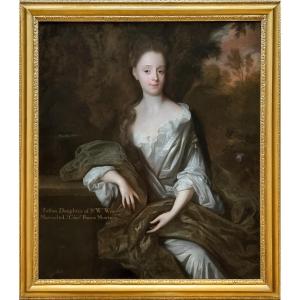
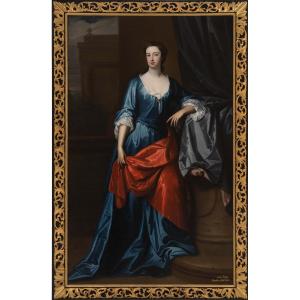
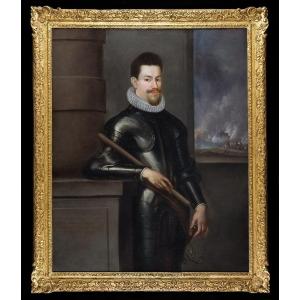


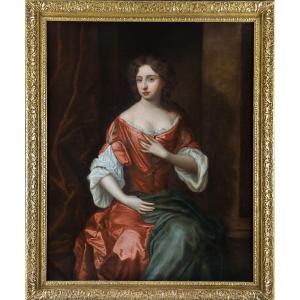





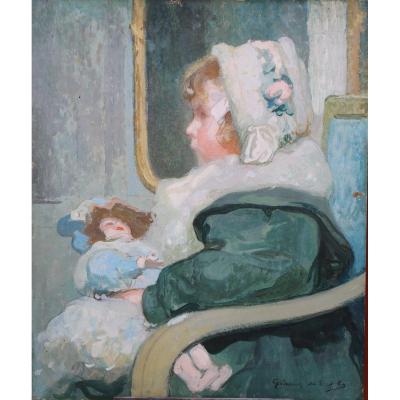





 Le Magazine
Le Magazine Rivista Artiquariato
Rivista Artiquariato TRÉSORS magazine
TRÉSORS magazine

